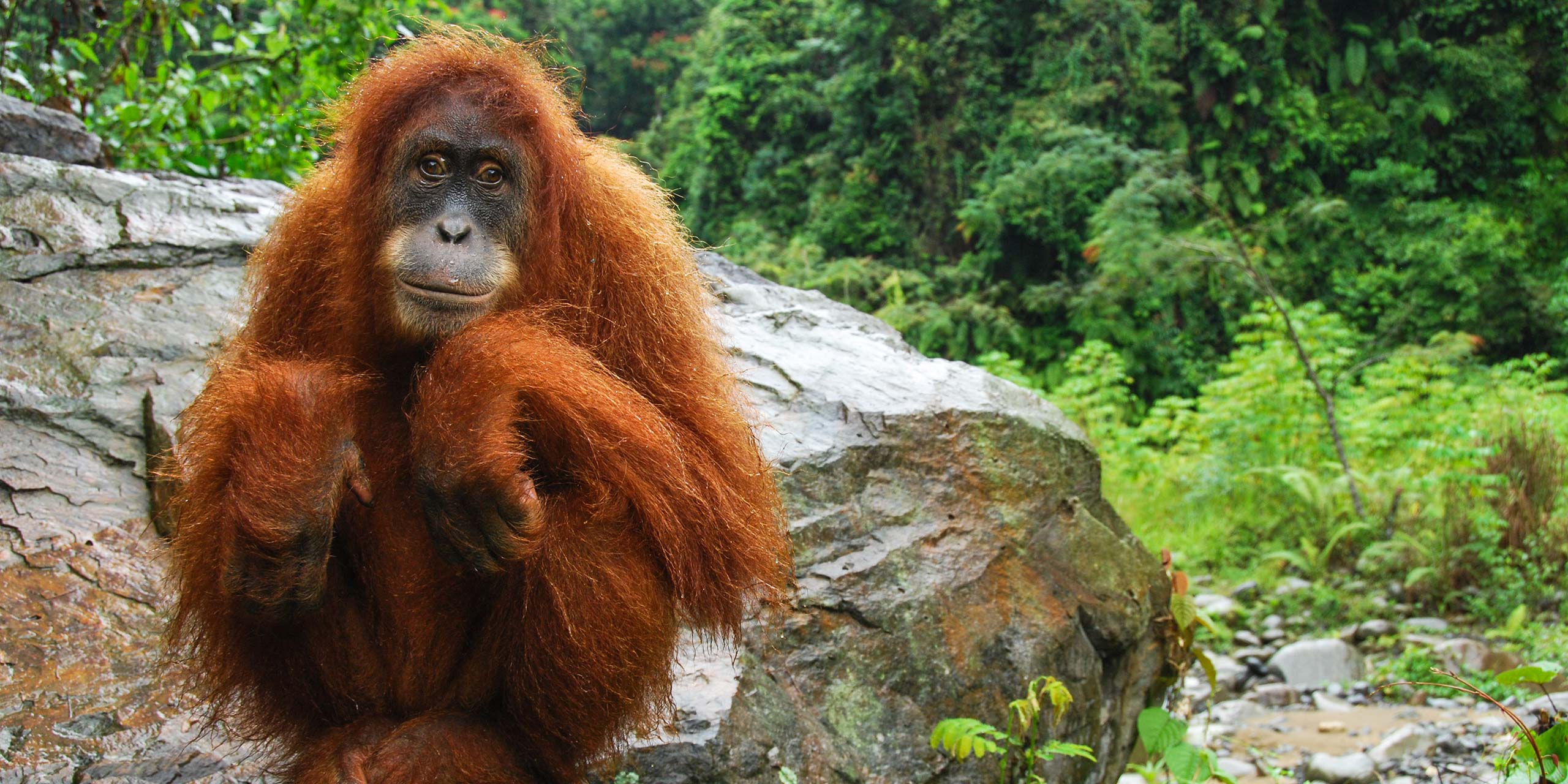
The atmosphere is so thick and tense that even a sharp blade would struggle to cut through it.
“Please hold still… Don’t move”.
Our guide Ricky — an Indonesian version of a Rasta, with a permanent jolly smile plastered on his face and a free fall of vine-like dreadlocks reaching down to his lower back — hushes behind me in the jungle.
Back at the one-horse town of Bukit Lawang, close to the province of Aceh with its strict Islamic rules, his globalized hairstyle would be enough to raise many eyebrows. But here in the thick of Gunung Leuser national park, what’s happening in the jungle right in front of us is far more concerning.
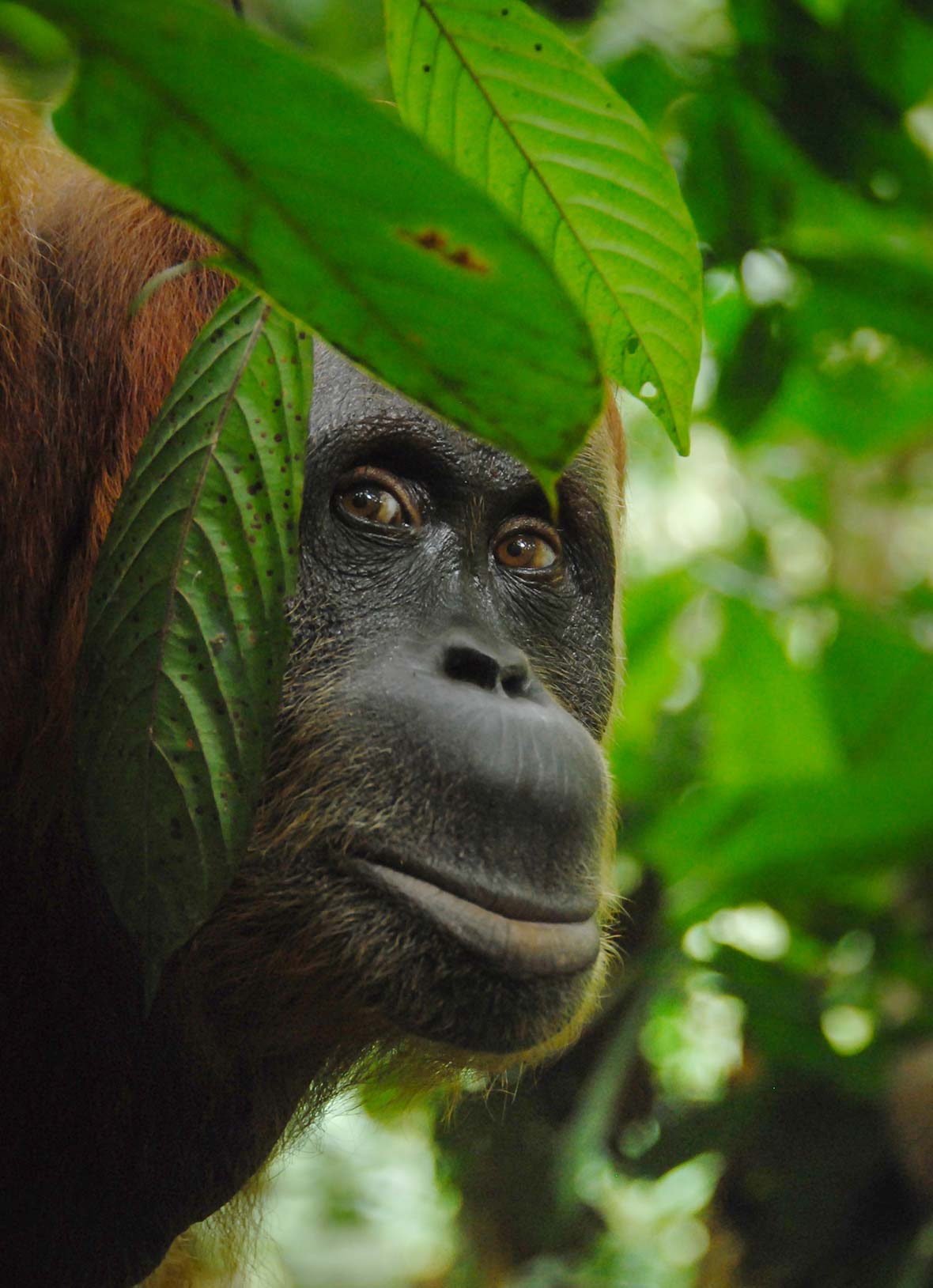
“It’s OK… it doesn’t hurt,” says my wife, Kit Yeng. The petite Malaysian Chinese photographer barely weighs 42 kilograms, and yet dared to step way too close to an ape a time and a half her size for the sake of a perfect picture. Kit is now crouching next to the primate as it hovers in mid-air with three limbs clutched around a web of rattan lianas. The spare right foot is closed right above Kit’s left knee in a way that may well forecast a broken femur.
I gulp, waiting to hear the cracking sound of crushed bones — but until now, the orangutan’s face has remained unchanged, like an imperturbable dark pool whose stone-like calm is only broken by intermittent flinching of black lips.
“Fantastic, then just keep staying still… don’t move,” claps back Ricky. We can all surmise that he’s hoping for this to end without a bad injury and five hours of carrying my wounded partner on his shoulders back to the village.
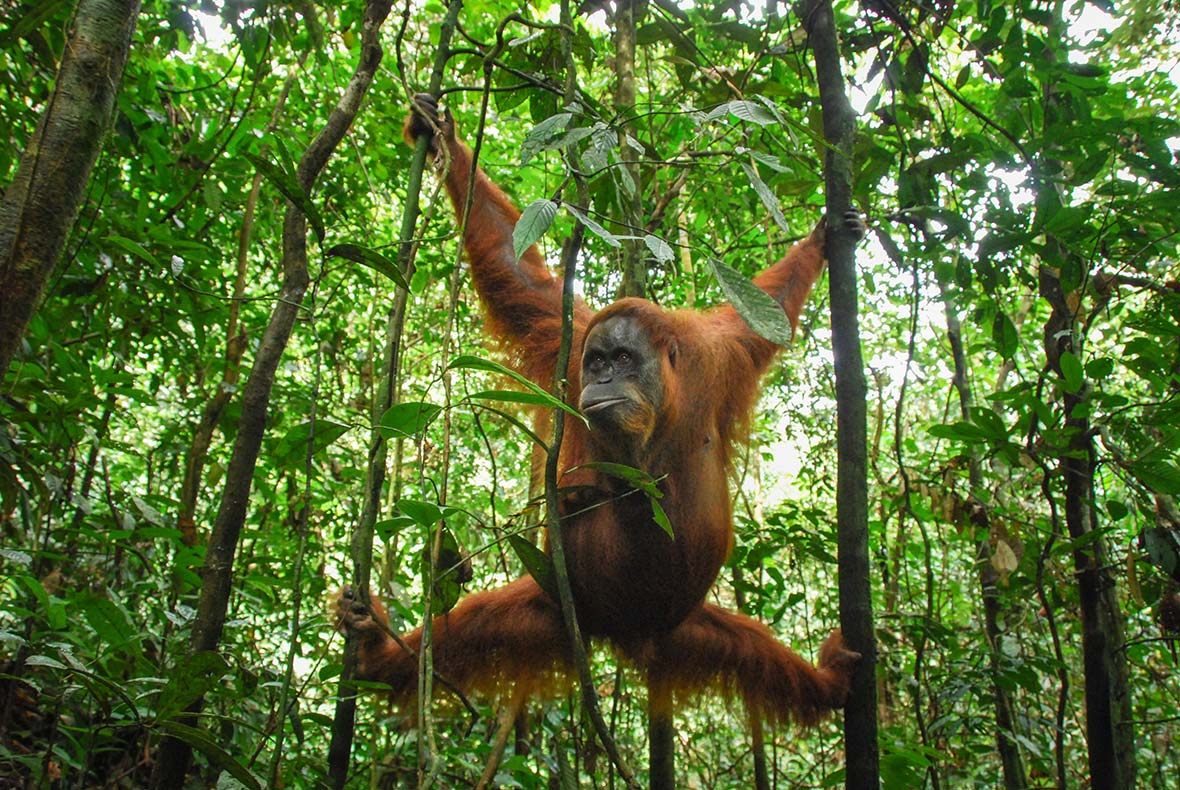
Kit doesn’t budge, watching the ape straight in the eyes, breathing slowly. It’s an electric moment that seems to last forever, until the bemused orangutan finally releases its catch, slowly bringing its leg back towards the tree it’s clinging to, before shifting its gaze away from Kit’s eyes and into the vegetation. When the orangutan petrifies again in a new pose, Kit slowly retraces sideways, moving away as swiftly as she can. Orangutans are beautiful creatures — but they can also tear a human limb apart with little effort. Don’t get me started on the bites.
As soon as the girl has made it back to safety, and the orangutan looks back at us without moving, Ricky’s back of neck finally releases, and his typical large smile rekindles his face.
“Who’s up next for pictures?” he asks. In our group of six, some fiddle with their cameras, but no one dares to step an inch forward.
I know. It’s completely bonkers to get that close to orangutans in the wild. But it’s also true that besides Bukit Lawang in Northern Sumatra, Indonesia, in very few other places in the world one can literally “get in touch” with semi-wild men of the forest.
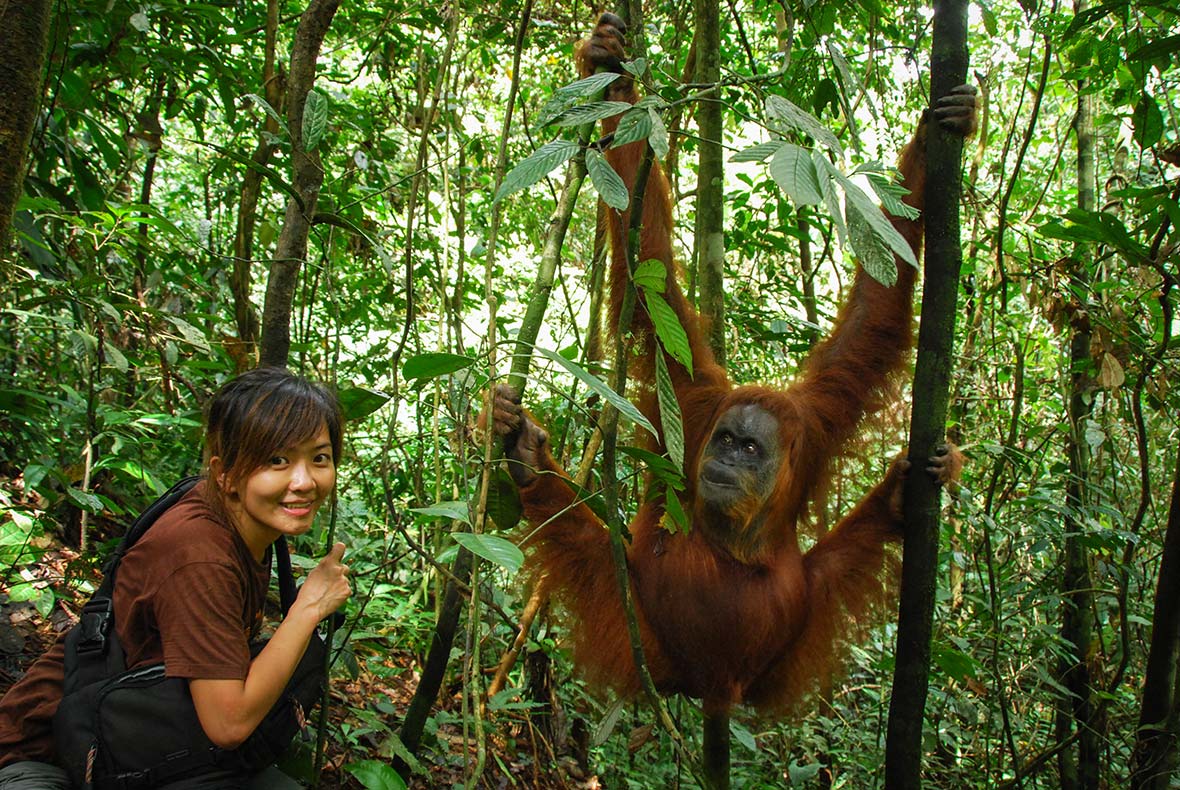
Walking in the forest of Gunung Leuser is the opposite of the more controlled experiences tourists can have at any of the rehabilitation centers of Indonesian and Malaysian Borneo, such as Sepilok in Sabah and Semenggoh in Sarawak. That’s exactly why we decided to visit Bukit Lawang and hire guides to trek into the park — if you can rough it up for a night in the jungle, it’s the best way to make incredible animal encounters.
Situated 86 kilometers to the northeast of busy Medan, the village of Bukit Lawang has been the home to the Swiss-managed and WWF-funded Bohorok Rehabilitation Centre since 1973. Foreign funding stopped in 1980 when the Indonesian Government took over management duties, and by 1996, the center stopped admitting orangutans as it no longer met the standards of species re-introduction.
But besides increasing deforestation and the lack of resources, the orangutans continued to attract tourists and provide vital income to the village — at least until 2 November 2003, when a terrible flood tore it to its foundations. Bukit Lawang was re-built thanks to foreign aid in 2004: Today, the new village is a stitched-up collection of thatched huts and concrete guesthouses lined on the two sides of the quaint, cappuccino-like Bohorok river. The swinging bridges that connect the two embankments give the place an eerie atmosphere, as if someone had taken out the town’s batteries, and pushed the arms of its clock back in time.
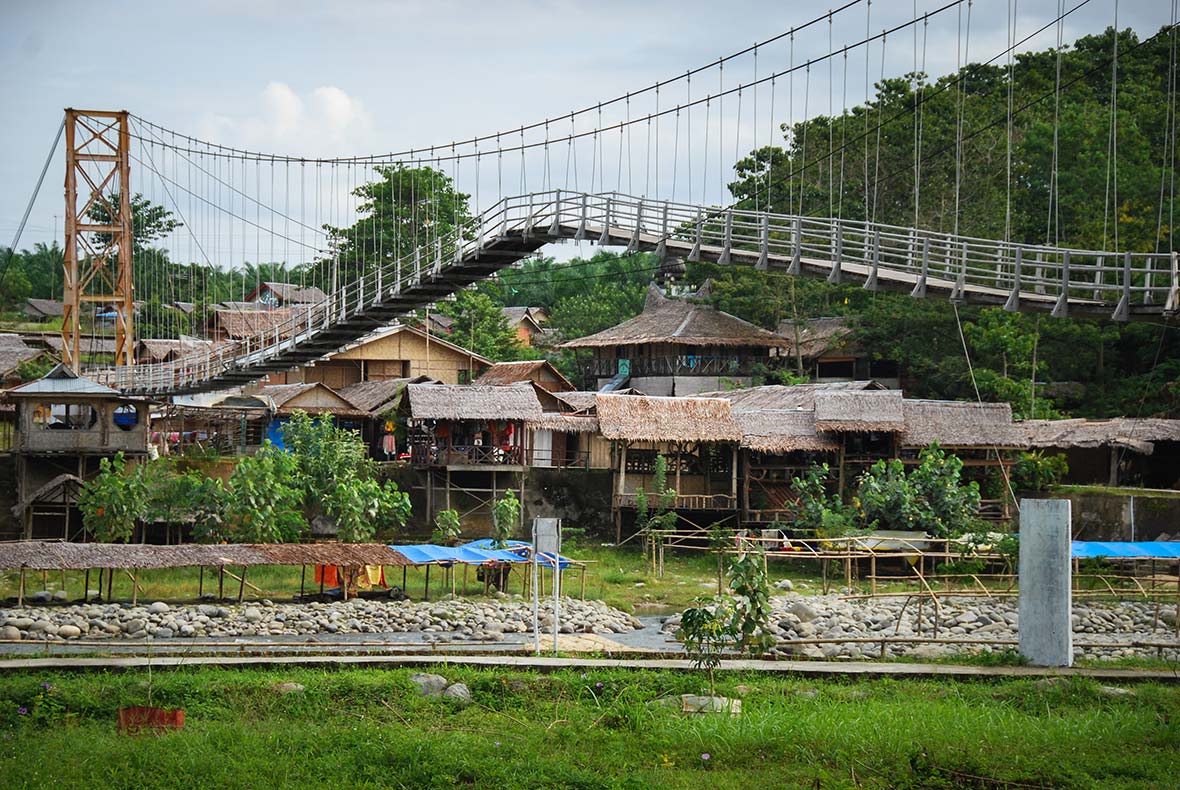
We arrived on a bemo — the standard Indonesian ramshackle mini-van — and didn’t have to wait long before Ricky approached us with a broad smile and a swing of his long, curvy hair.
The next morning, Ricky and two other guides lead us through a rubber estate and deep into the jungle of Gunung Leuser park. It takes less than two hours for our first encounter with the local apes. Perched on top of vines that fall all the way down to the ground, our first taste of orange-colored fur seems quite accustomed to seeing humans. Its relaxed movements are mesmerizing; but when it reaches out and grabs my wife’s leg, then I realize the importance of keeping a distance from these creatures.
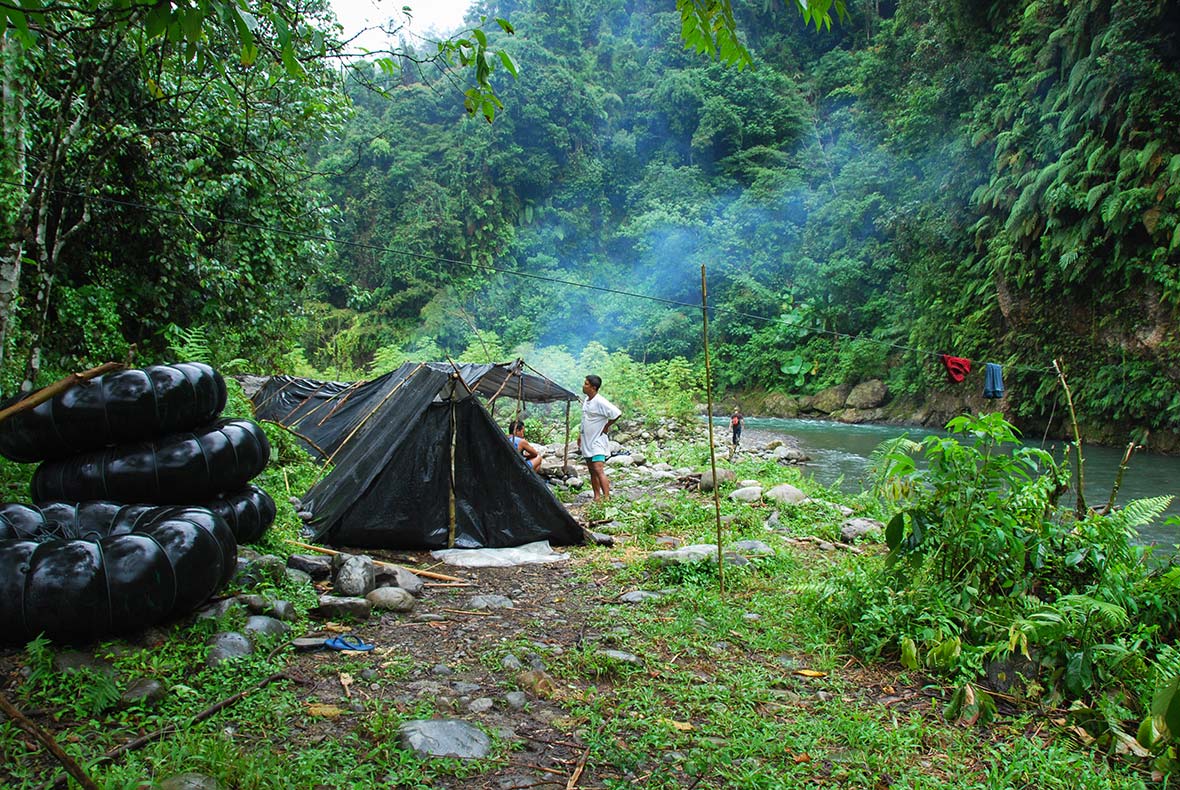
As you already know, the story ends without any broken bones, and just minutes after, we continue deeper into the jungle, and the canopy ahead of us starts rumbling. A muffled sound, like a suffocated scream, grows louder and louder. Ricky and the other two guides quickly hold us back, ordering us to not move a muscle and let them handle the situation.
“It’s Mina,” Ricky says. “Mom with a newborn baby. And she’s got quite a temper, so please just stay back and still,” he explains as if he knew the orangutan like an old-time friend.
Then the canopy shakes, branches push apart, and a much bigger orangutan rushes forward. Her mug is filled with a mouthful of angry teeth: clinging under her right armpit, a baby ape scans the scene with awkward curiosity. Mina stops just a few meters before us as thunder rumble inside of her ample chest, chilling my blood.
But Ricky knows how to appease this angry mommy: he slowly takes out a bunch of bananas and guava fruits from his backpack, holds out his right arm and passes them one by one into Mina’s black and orange claw. The ape gets calmer after each bite, and soon she’s back into the forest as quickly as she has come, and we are free to move on.
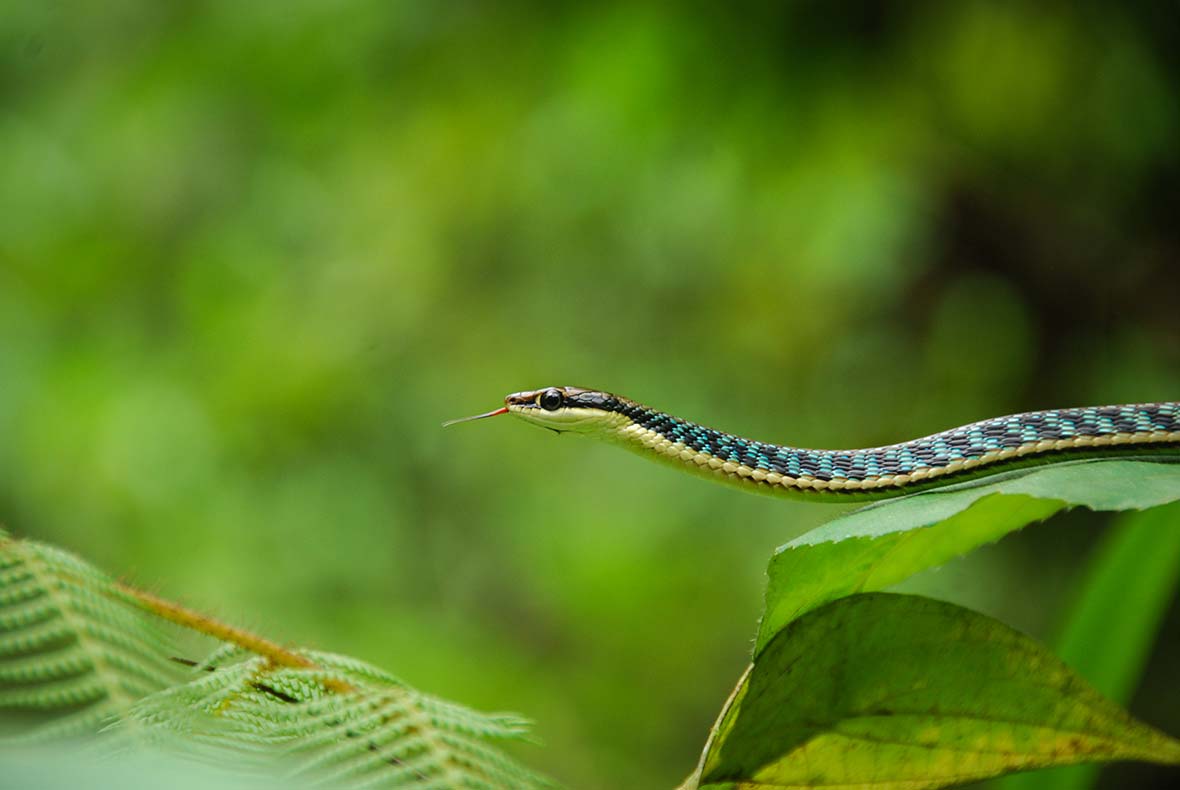
By the time we reach our campsite next to the riverbed, we get to know that besides orangutans, Gunung Leuser national park wriggles with black gibbons, black leaf monkeys, and a few emerald snakes that we are very careful not to touch. In the pitch-black darkness that ensues a glorious sunset, the sound of the nearby river and the hoot of monkeys paint the night with jungly awe. Our rice and vegetable dinner is served around a campfire by our guides, and once we are all full, they take out their guitars, and it’s a mix of reggae classics and canopy clatter that help put us all to sleep.
The final surprise comes early the next morning: as we wake up and reach for the nearby river to freshen up, we notice that something is awaiting next to the leftovers of yesterday night’s campfire. I can’t help but laugh when I see a smaller orangutan holding an empty condensed milk can above his head. He investigates it, waiting for one last thread of silky sugar to drop into his curled lips, exactly like a human would do with his last nightcap.
“You are very lucky today… this is our third star and good friend, Jackie,” says Ricky. Like two friends who haven’t seen each other in a while, man, and beast cross gazes until the latter, almost magically, finally drops her makeshift cup and comes closer to our encampment. The other guides, who were toasting bread over the fire for breakfast, quickly reach for the other food supplies and stash them out of orangutan reach.
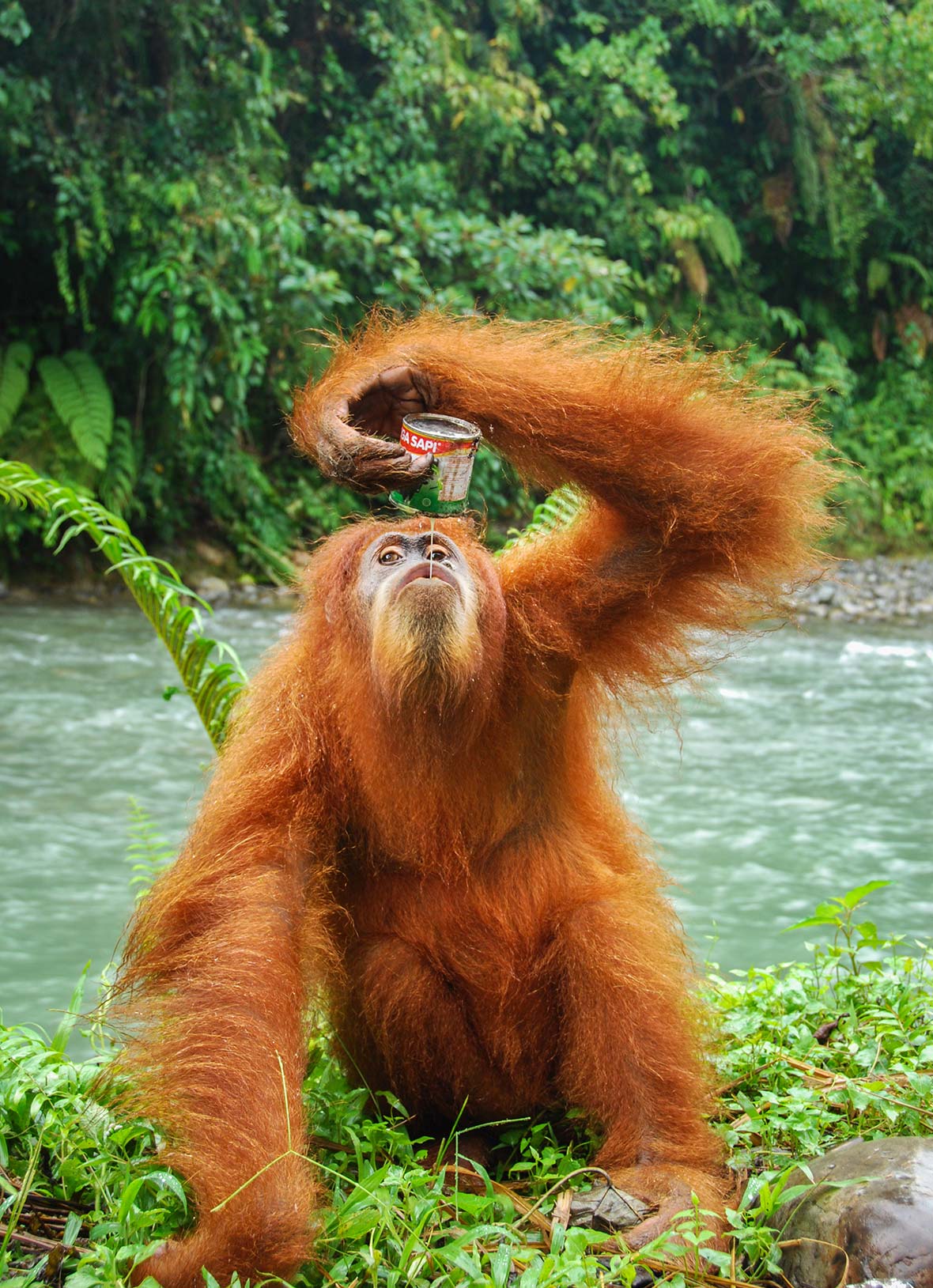
But Jackie seems more amused by men than food, and comes very close, her eyes fixed timidly on the ground before her every step. It’s like she’s silently asking to be allowed to come closer to us humans. We take turns standing inches from her and admiring her closely: the kindle in her eyes exudes intelligence, and that’s the most haunting memory I will carry back with me downriver.
Sitting inside inflated tractor tubes, we float back to Bukit Lawang past white smoke that connects the metallic chimneys of makeshift homes to the edges of clouds. We stop at a bay nestled below the swinging bridges, from where it’s just a short slog uphill to the village’s main thoroughfare.
“Come back again soon,” says Ricky as he collects the tubes and puts them on a canoe, preparing to tackle another trip upriver. As his boat’s engine sputter and fades around the farthest river bend, I wonder if his next batch of tourists will be as lucky as Ricky said we were — or if it’s all part of the perfect business deal that he sealed with the men of the jungle.
